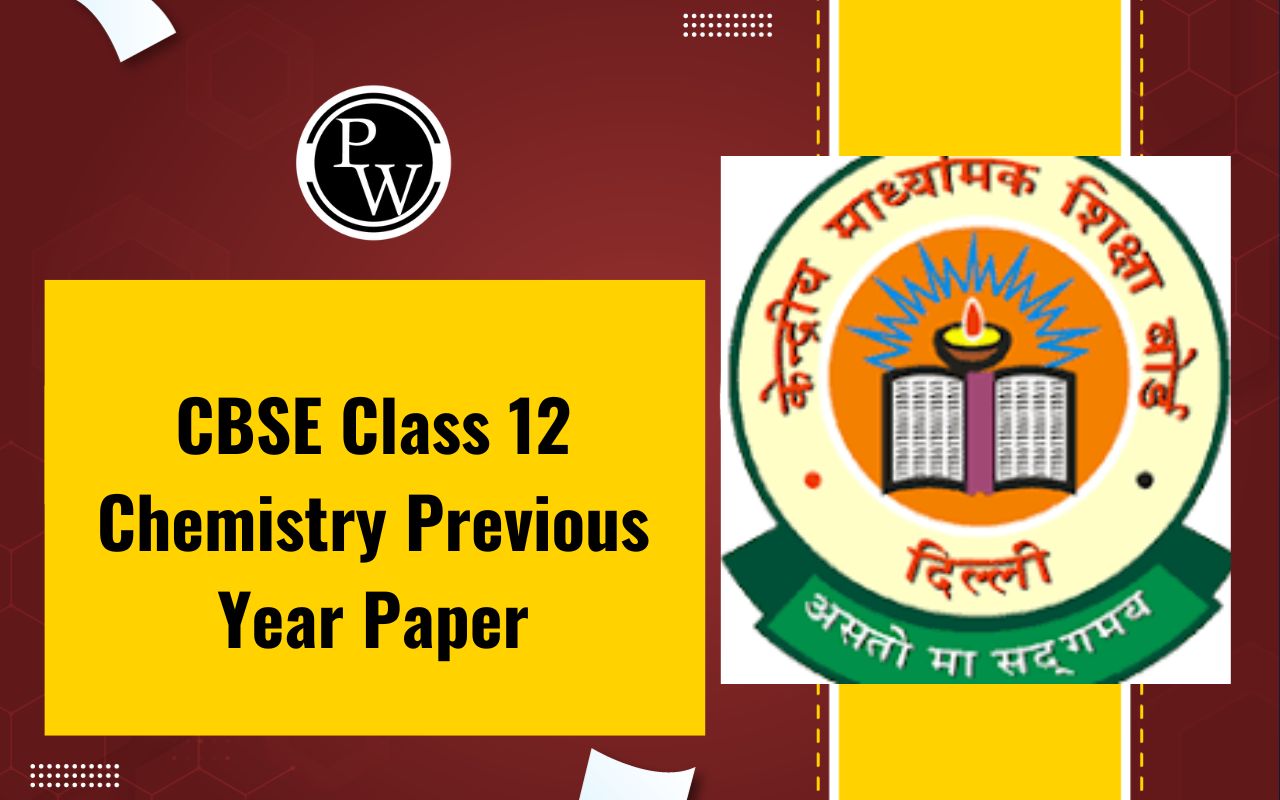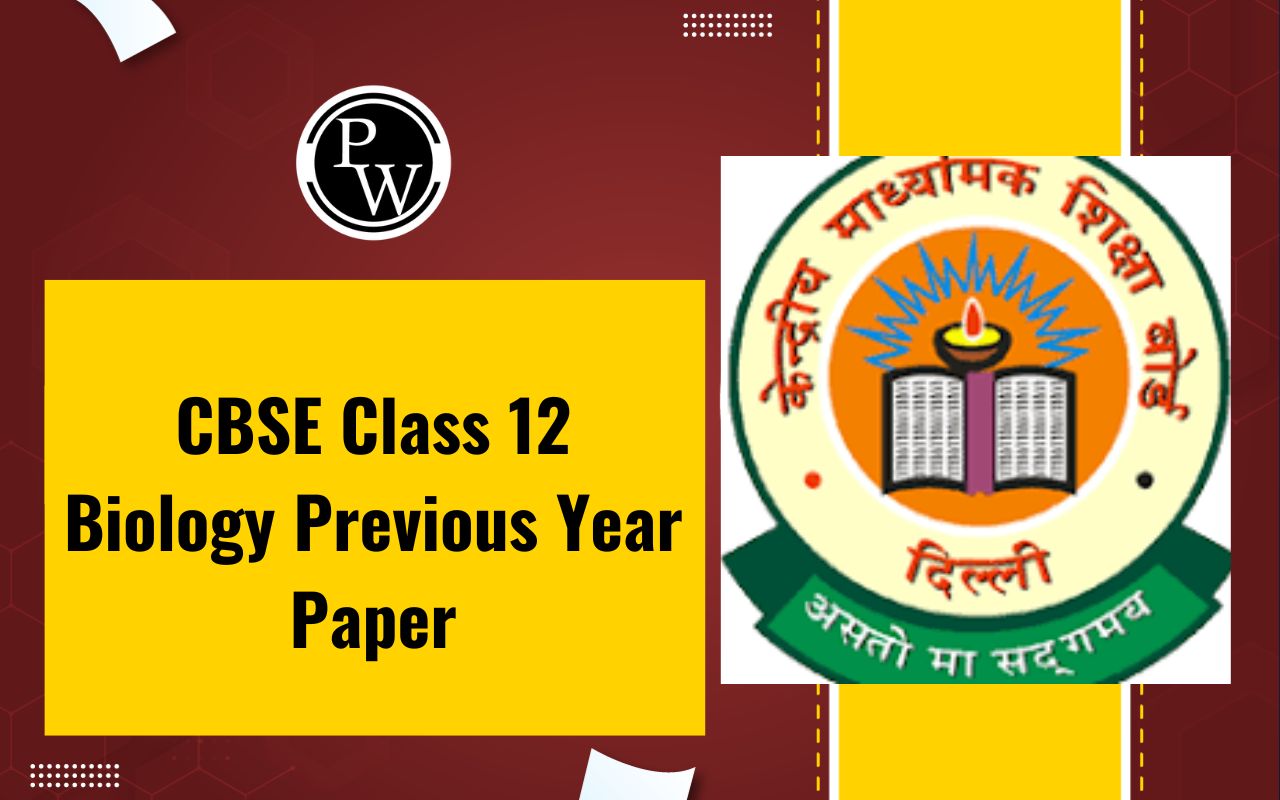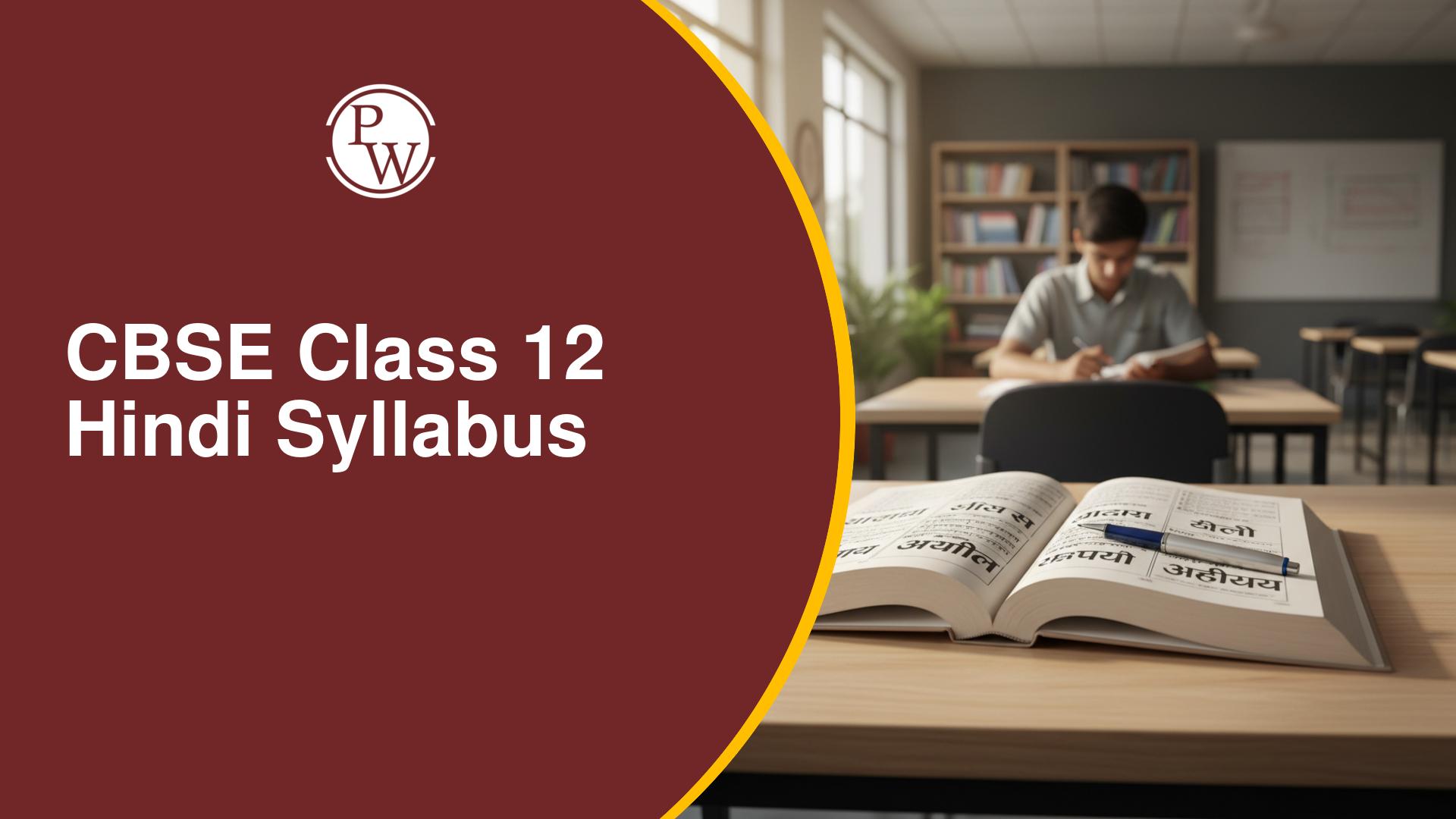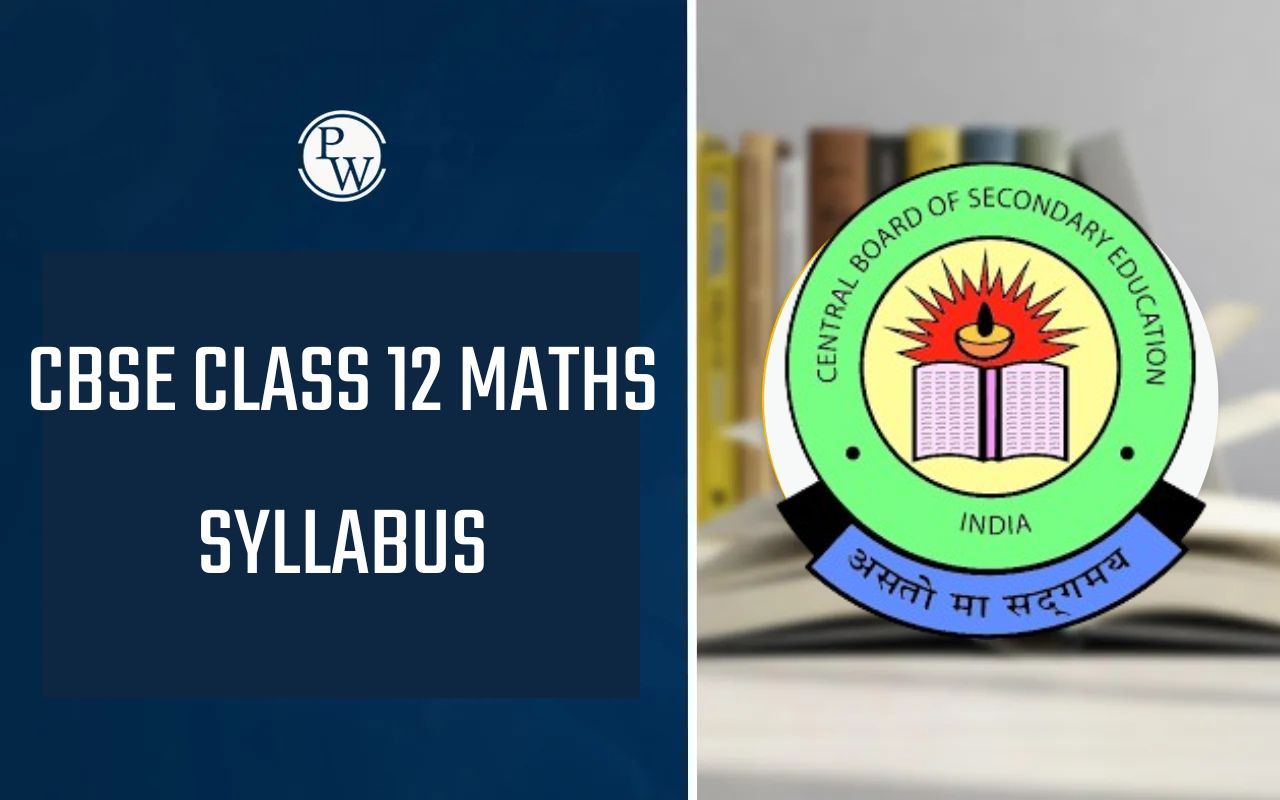
NCERT Solutions for Class 12 Maths Chapter 9
NCERT Solutions for Class 12 Maths Chapter 9: NCERT Solutions for Class 12 Maths Chapter 9 are available here, providing clear explanations for every question in the chapter. This chapter is part of the CBSE Syllabus for 2023-24. Students explore topics like the order and degree of differential equations, methods for solving them, their properties, and more. Using the NCERT Solutions for Class 12 Maths to solve exercises in this chapter aids in developing a strong understanding of the concepts of differential equations. Chapter 9's solutions in NCERT for Class 12 Maths present Differential Equations concepts easily, supporting students in their board exam preparations. The answers provided can help students comprehend how to approach and solve each question effectively. These NCERT Solutions for Class 12 Maths Chapter 9 can be downloaded for free, allowing students to practise at their convenience.NCERT Solutions for Class 12 Maths Chapter 9 Overview
NCERT Class 12 Maths Chapter 9 provides a comprehensive exploration of "Differential Equations." It forms a vital component of the CBSE Syllabus. The chapter delves into fundamental concepts, including the order and degree of differential equations, methods for solving them, and their properties. Students gain insight into practical applications, enhancing problem-solving skills. The solutions presented are designed to facilitate easy comprehension, aiding students in board exam preparations. By offering a systematic breakdown of topics, Chapter 9 fosters a strong grasp of differential equations, pivotal for further studies in mathematics and related fields. The downloadable NCERT Solutions for Class 12 Maths Chapter 9 empower students to practise and refine their understanding at their convenience.NCERT Solutions for Class 12 Maths Chapter 9 Chapter at a Glance
9.1 Introduction to Differential Equations:
Important Points:
- Differential equations involve derivatives and represent relationships involving rates of change.
- The solutions to differential equations are functions rather than specific values.
Formula:
A general form of a first-order linear differential equation is dy/dx + P(x)y = Q(x).9.2 Basic Concepts:
Important Points:
- Classifies differential equations based on the order (highest derivative present) and degree (power of the highest derivative).
- First-order differential equations contain only the first derivative, second-order contains up to the second derivative, and so on.
Formulas:
- The order of a differential equation is determined by the highest derivative present.
- The degree is the highest power to which the derivative is raised.
9.3 General and Particular Solutions of a Differential Equation:
Important Points:
- The general solution includes arbitrary constants and represents a family of solutions.
- A particular solution arises when specific conditions or initial values are applied.
Formulas:
- General solution: y = f(x, C₁, C₂, ..., Cₙ) (where C₁, C₂, ..., Cₙ are constants).
- Particular solution: Obtained by applying initial or boundary conditions to the general solution.
9.4 Methods of Solving First-Order, First-Degree Differential Equations:
Important Points:
- Separation of variables involves isolating variables on one side and integrating both sides.
- Homogeneous differential equations are solved by substituting y = vx and solving for v.
Formulas:
- Separation of variables: (dy/dx) = g(y)h(x) can be solved by ∫(1/g(y)) dy = ∫h(x) dx.
- Homogeneous differential equations: Substituting y = vx in (dy/dx) = f(x, y).
9.5 Linear Differential Equations:
Important Points:
- Linear differential equations can be written in the form (dy/dx) + P(x)y = Q(x).
- Integrating factors are used to solve linear differential equations.
Formulas:
- Linear differential equation: (dy/dx) + P(x)y = Q(x).
- Integrating factor (μ): μ = e^(∫P(x) dx).
9.6 Summary:
Class 12 Maths Chapter 9 of the NCERT syllabus delves into the realm of "Differential Equations," offering a comprehensive exploration of the principles and applications of this fundamental concept in mathematics. The chapter begins by elucidating the significance of differential equations in modelling real-world phenomena, emphasising their role in expressing relationships involving rates of change. This foundational understanding sets the stage for a deeper exploration of the topic. The chapter systematically introduces the classification of differential equations based on their order and degree, providing students with a clear framework to comprehend the complexity and power of these equations. First-order, second-order, and higher-order differential equations are discussed, laying the groundwork for subsequent topics. Methods for solving differential equations form a crucial segment of the chapter. Students are introduced to various techniques, including separation of variables, substitution for homogeneous equations, and the use of integrating factors for linear equations. Each method is explained with illustrative examples, enabling students to grasp the intricacies of solving differential equations step by step. One of the highlights of the chapter is its emphasis on the practical applications of differential equations. Real-world scenarios, ranging from population growth to chemical reactions, are modelled using these equations, bridging the gap between theoretical knowledge and its application in diverse fields. This application-oriented approach not only enhances the relevance of the chapter but also underscores the versatility of differential equations in describing dynamic processes. The chapter concludes by summarising the key concepts covered, reinforcing the classification of differential equations and the methods employed in their solution. It provides a platform for students to connect the theoretical aspects of the subject with practical problem-solving, preparing them for the challenges of higher-level mathematics and its application in various scientific disciplines.NCERT Solutions for Class 12 Maths Chapter 9 Differential Equations Exercises
NCERT Solutions for Class 12 Maths Chapter 9 Differential Equations is important for helping students with their Class 12 preparation. Find the exercise-wise solutions in the table below:| NCERT Solutions for Class 12 Maths Chapter 9 Differential Equations Exercises |
| Exercise 9.1 |
| Exercise 9.2 |
| Exercise 9.3 |
| Exercise 9.4 |
| Exercise 9.5 |
| Exercise 9.6 |
| Miscellaneous Exercise |
Benefits of NCERT Solutions for Class 12 Maths Chapter 9
NCERT Solutions for Class 12 Maths Chapter 9, focusing on "Differential Equations," offer several benefits that aid students in understanding and mastering the concepts. Here's a detailed exploration of the advantages: 1. Conceptual Clarity: The solutions provide clear and detailed explanations for each question, enhancing conceptual clarity. This is crucial for understanding the fundamental principles of differential equations. 2. Step-by-Step Guidance: The solutions offer step-by-step guidance on solving problems, helping students follow a logical approach. This systematic method assists in building problem-solving skills. 3. Comprehensive Coverage: The solutions cover all topics within Chapter 9, including basic concepts, general and particular solutions, and methods of solving differential equations. This comprehensive coverage aligns with the CBSE syllabus. 4. Real-World Application Understanding: The chapter emphasises the practical applications of differential equations. The solutions provide insights into how these equations are used to model real-world phenomena, enhancing the understanding of their significance. 5. Exam Preparation: By providing solutions to exercises and problems, NCERT Solutions serve as a valuable resource for exam preparation. Students can practise extensively, gaining confidence in their ability to solve problems related to differential equations. 6. Enhanced Problem-Solving Skills: Through a variety of solved examples, the solutions contribute to the development of effective problem-solving skills. This is crucial not only for exams but also for future academic and practical applications of mathematics. 7. Understanding Formulas and Methods: The solutions elucidate the various formulas and methods used to solve differential equations. Understanding these formulas is key to efficiently solving problems and equations. 8. Visual Representation Some solutions include visual representations, aiding in the understanding of geometric interpretations. Visual aids enhance comprehension and help students relate mathematical concepts to their graphical counterparts. 9. Self-Assessment and Practice: The exercise questions and additional problems provided in NCERT Solutions allow students to self-assess their understanding. Regular practice using these solutions builds proficiency and confidence. 10. Free Accessibility: NCERT Solutions are often freely accessible online. This accessibility ensures that all students can benefit from these resources without incurring additional costs. 11. Foundation for Advanced Studies: The clear understanding gained through NCERT Solutions sets a strong foundation for advanced studies in mathematics and related fields. The practical applications explored in this chapter are fundamental for higher-level concepts. 12. Aligned with CBSE Syllabus: Since NCERT is the prescribed textbook for CBSE, using NCERT Solutions ensures alignment with the board's syllabus. This is essential for preparing for board exams.How to Prepare With NCERT Solutions for Class 12 Maths Chapter 9
Preparing for Class 12 Maths Chapter 9, "Differential Equations," using NCERT Solutions involves a systematic and strategic approach. Here's a detailed guide on how to effectively prepare with these solutions: 1. Understand the Basics: Dive deep into the fundamental concepts of differential equations. Understand that these equations involve derivatives and explore how they model various dynamic processes in real-world scenarios. Differentiate between ordinary and partial differential equations. 2. Read NCERT Textbook: Actively engage with the NCERT Class 12 Maths textbook for Chapter 9. Pay attention to the theoretical explanations, worked-out examples, and practical exercises. Take notes to reinforce your understanding and create a quick reference for revision. 3. Use NCERT Solutions for Examples: For each example in the NCERT textbook, refer to the corresponding NCERT Solutions. Analyse the step-by-step solutions provided to understand the reasoning behind each step. This enhances your problem-solving skills. 4. Solve Exercise Questions Independently: Attempt the exercise questions in the NCERT textbook on your own before referring to the solutions. This helps identify areas where you need more practice and reinforces your understanding. 5. Refer to NCERT Solutions for Practice: After attempting the exercise questions, refer to the NCERT Solutions. Compare your solutions with the provided solutions to identify mistakes and learn alternative methods of solving problems. 6. Focus on Formulas: Understand and memorise the formulas related to differential equations, such as those for linear differential equations and methods like separation of variables. Efficient use of formulas is essential for problem-solving. 7. Practice Regularly: Integration skills improve with practice. Regularly solve problems from the NCERT textbook and additional exercises provided in NCERT Solutions. Consistent practice builds confidence and proficiency. 8. Understand Geometric Interpretations: Visualise the geometric interpretations of differential equations. Understand how the solutions represent curves and how different factors affect the shapes of these curves. Visualisation aids in grasping the practical implications. 9. Apply Concepts to Real-World Examples: Relate differential equation concepts to real-world scenarios. Understand how these equations are used to model various phenomena, making the learning experience more practical and engaging. 10. Seek Clarification for Doubts: If you encounter doubts or difficulties, seek clarification from your teacher, classmates, or online resources. A clear understanding of the basics is crucial for mastering differential equations. 11. Create a Study Schedule: Plan your study schedule, allocating specific times for reading the textbook, solving problems, and reviewing NCERT Solutions. Breaking down your study sessions can make the preparation process more manageable. 12. Utilise Additional Resources: While NCERT Solutions are excellent, consider exploring additional resources, such as reference books, online tutorials, or practice tests, to broaden your understanding and exposure to different problem-solving techniques. 13. Review Regularly: Periodically review the entire chapter, focusing on challenging topics or problems. This revision process ensures that you retain the knowledge and are well-prepared for exams. 14. Simulate Exam Conditions: Closer to exams, simulate exam conditions by solving practice papers and previous years' question papers within a specified time limit. This helps improve time management and builds exam confidence.NCERT Solutions for Class 12 Maths Chapter 9 FAQs
What is the significance of differential equations in real-world applications?
Differential equations are crucial in modelling real-world phenomena involving rates of change. They help describe dynamic processes such as population growth, chemical reactions, and physical movements.
How are differential equations classified, and what is the difference between order and degree?
Differential equations are classified based on their order (highest derivative present) and degree (power of the highest derivative). The order indicates the complexity, while the degree specifies the highest power of the derivative.
What are the methods for solving first-order, first-degree differential equations?
Common methods include separation of variables, homogeneous equations solved by substitution, and linear differential equations solved using integrating factors. Understanding these methods is crucial for solving problems efficiently.
Why are integrating factors used in solving linear differential equations?
Integrating factors are employed to simplify the solution process of linear differential equations. They help make the equations more amenable to integration, leading to a more straightforward solution.
How do differential equations contribute to mathematical modelling?
Differential equations play a significant role in mathematical modelling by providing a framework to express relationships involving rates of change. This modelling is instrumental in predicting and understanding various natural and scientific phenomena.
🔥 Trending Blogs
Talk to a counsellorHave doubts? Our support team will be happy to assist you!

Free Learning Resources
PW Books
Notes (Class 10-12)
PW Study Materials
Notes (Class 6-9)
Ncert Solutions
Govt Exams
Class 6th to 12th Online Courses
Govt Job Exams Courses
UPSC Coaching
Defence Exam Coaching
Gate Exam Coaching
Other Exams
Know about Physics Wallah
Physics Wallah is an Indian edtech platform that provides accessible & comprehensive learning experiences to students from Class 6th to postgraduate level. We also provide extensive NCERT solutions, sample paper, NEET, JEE Mains, BITSAT previous year papers & more such resources to students. Physics Wallah also caters to over 3.5 million registered students and over 78 lakh+ Youtube subscribers with 4.8 rating on its app.
We Stand Out because
We provide students with intensive courses with India’s qualified & experienced faculties & mentors. PW strives to make the learning experience comprehensive and accessible for students of all sections of society. We believe in empowering every single student who couldn't dream of a good career in engineering and medical field earlier.
Our Key Focus Areas
Physics Wallah's main focus is to make the learning experience as economical as possible for all students. With our affordable courses like Lakshya, Udaan and Arjuna and many others, we have been able to provide a platform for lakhs of aspirants. From providing Chemistry, Maths, Physics formula to giving e-books of eminent authors like RD Sharma, RS Aggarwal and Lakhmir Singh, PW focuses on every single student's need for preparation.
What Makes Us Different
Physics Wallah strives to develop a comprehensive pedagogical structure for students, where they get a state-of-the-art learning experience with study material and resources. Apart from catering students preparing for JEE Mains and NEET, PW also provides study material for each state board like Uttar Pradesh, Bihar, and others
Copyright © 2025 Physicswallah Limited All rights reserved.
Get App









